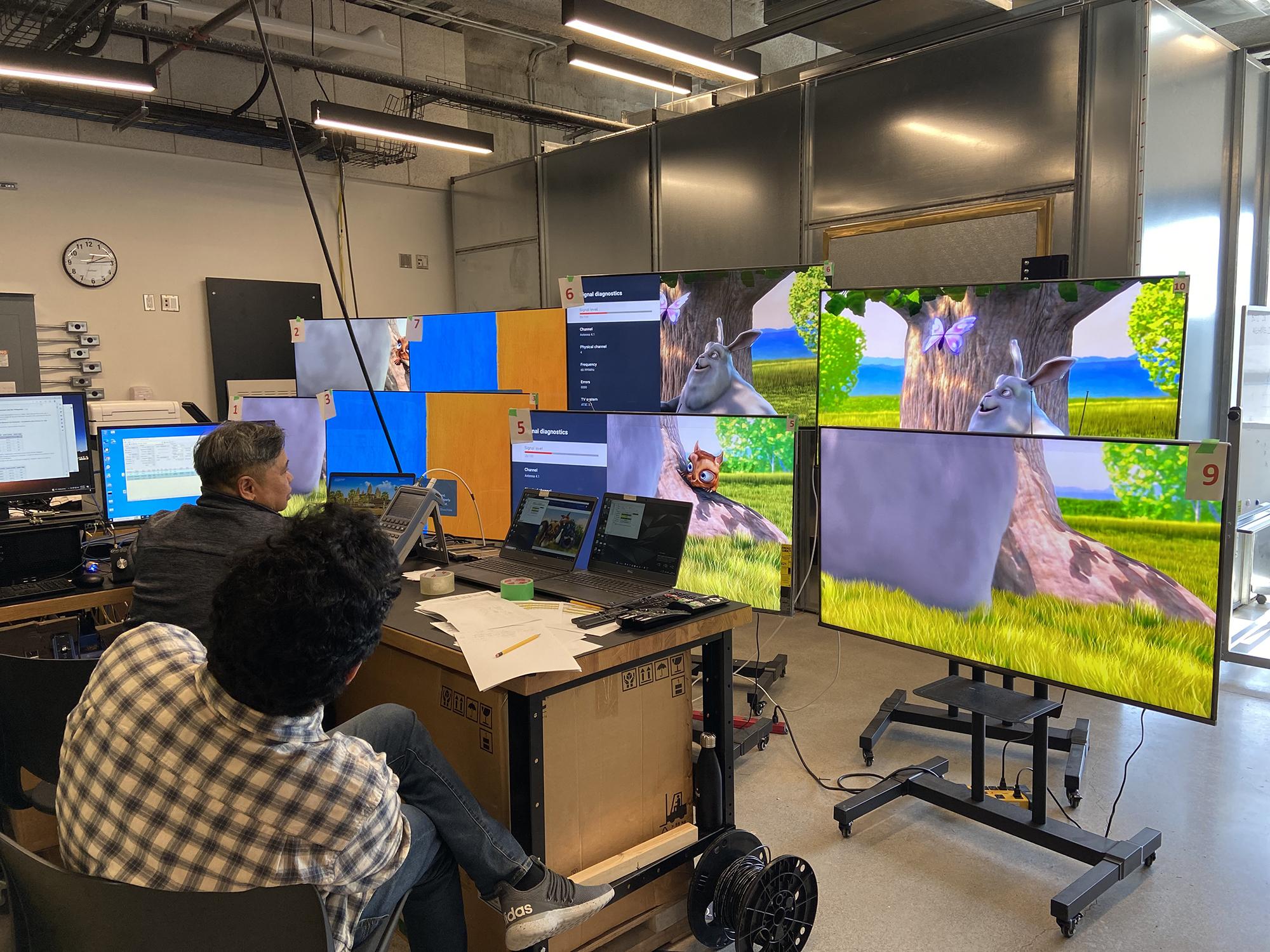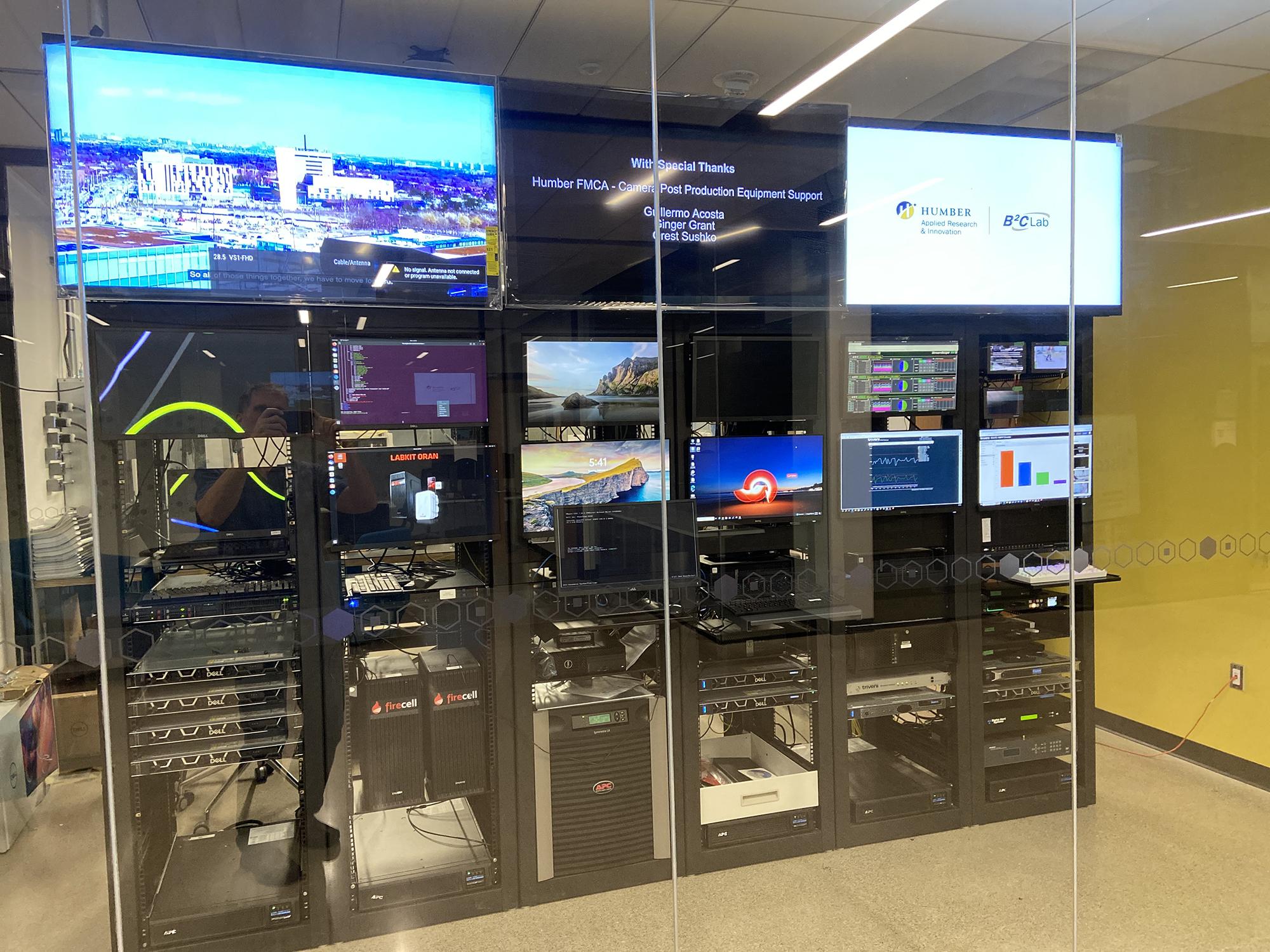
Humber is hosting the IEEE International Symposium on Broadband Multimedia Systems and Broadcasting from June 19 to June 21 at the Barrett Centre for Technology Innovation.
The symposium is a forum for the presentation and exchange of technical advances in multimedia broadcasting, telecommunications, consumer electronics and networking technologies. Humber’s Broadcast-Broadband Convergence (B²C) Lab is a supporting organization along with IEEE’s Toronto chapter.
Harleen Sachdeva, project manager, Research and Innovation at Humber, said researchers from around the globe will attend (either in-person or virtually) to hear their peers present research papers. More than 100 papers will be presented on topics including multimedia transmission, multimedia networking, multimedia signal processing, and multimedia service, quality and content.
“Generally, the role of the conference is to bring unpublished papers and unpublished research into the published domain,” said Orest Sushko, director, B²C Lab. “These scientific researchers come together every year and they bring forth their new discoveries, if you will, in these various areas.”
Paul Griffin, senior dean with the Faculty of Applied Sciences & Technology (FAST), is one of six keynote speakers at the conference. Other Humber faculty active on the lab’s research team are part of the various conference committees.
The B²C Lab is the first of its kind in North America and is located at the Barrett Centre for Technology Innovation at Humber’s North Campus. The lab explores multisectoral applications using the new IP-based ATSC 3.0, a next generation terrestrial IP-based broadcast transmission standard, set to replace the current North American standard, ATSC 1.0.

The ATSC 3.0 terrestrial broadcast system can integrate with other global IP data delivery standards, including wi-fi and 5G. It offers enhanced audio and visual features for television, full broadcast mobility and is currently the world's most efficient one-to-many data delivery system.
Last month, the B²C Lab began broadcasting ATSC 3.0 live on the CN Tower by integrating into Rogers Sports & Media and Corus Entertainment’s commercial infrastructure. Sushko noted they now have four ATSC 3.0 experimental transmission sites across Toronto and the CN Tower site extends their reach to be able to test more than 25 per cent of Canada’s marketplace.
Last November, the lab hosted a seminar with the National Association of Broadcasters called Protecting GPS with Resilient PNT Solutions. The B²C Lab is leading key research here in Canada with a Canadian company on developing a complementary terrestrial-based PNT (Position, Navigation, Timing) system known as Broadcast Positioning System in the event of loss of GPS services.
The critical infrastructure sectors that rely on GPS for precision time service include the energy and power grid, communications, financial transactions, all modes of transportation, first responders, chemical, dams, information technology, critical defence, manufacturing, health care and public health, and food and agriculture to name several.
Currently, there’s no backup GPS system in the United States or Canada. The PNT signals and other data from (U.S. operated) GPS satellites allow these infrastructure capabilities to function reliably. Without these capabilities, the Canadian and U.S. economies would come to a standstill.

The lab is also deploying Canada’s first broadcast emergency response network for both first responders and public alerting applications. When cell towers go down in extreme weather disasters (including fires and floods), they can often take out the Land Mobile Radio systems operating on those towers used by first responders.
Fibre connections can also be rendered inoperable in similar instances. Using the ATSC 3.0 terrestrial broadcast TV system, Emergency Management Agencies (such as police, fire and EMS) can transmit information directly to first responders’ devices using existing high-power, high-tower TV broadcast infrastructure that operates completely independently of other communications systems.
Those interested in attending can register by visiting the IEEE BMBB 2024 conference website.
More information about the lab can be found at b2convergence.ca.